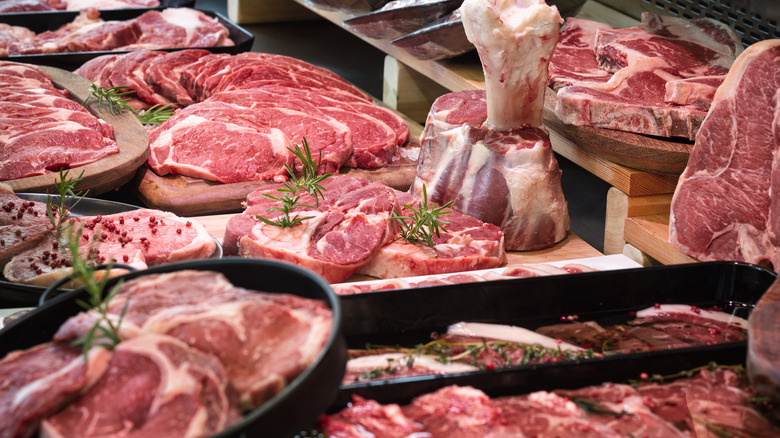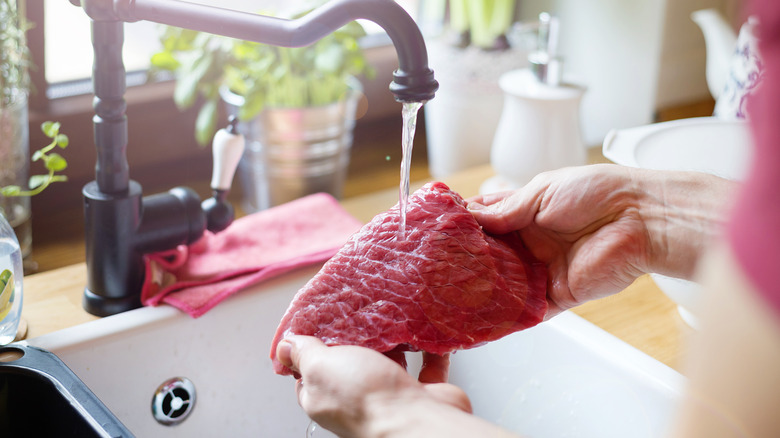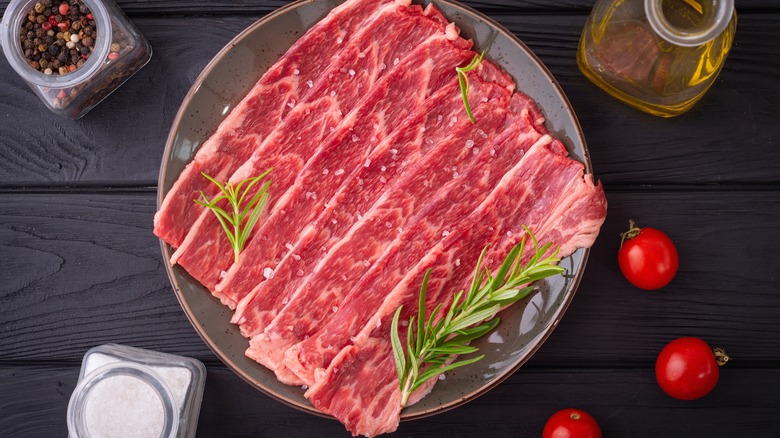Why You Should Seriously Never Wash Red Meat
Red meat has a starring role in countless sumptuous recipes. As home cooks, our instinct might lead us to run the meat under a stream of cold water before the actual cooking begins, a habit we've probably picked up with the notion of hygiene in mind. However, this seemingly harmless step is more detrimental than beneficial. Washing red meat isn't an effective way to rid it of bacteria. Rather, it heightens the risk of cross-contamination, with water splashes potentially dispersing harmful bacteria, including E. coli and Salmonella, around your kitchen. This can contaminate countertops, utensils, and other food items.
In reality, the most reliable method of eliminating bacteria is cooking the meat to the correct temperature. Forgoing the washing routine is a step towards safer and more hygienic food preparation.
Washing red meat also introduces an unwelcome guest: excess moisture. This surplus water can interfere with the browning process during cooking, an essential step that enriches the flavor and texture of meat. Instead of achieving a nicely seared, caramelized exterior, you may end up with a steamed or boiled texture, compromising the taste and appeal of your dish. By skipping the rinse, you're not only ensuring a safer kitchen but also endorsing a tastier meal.
Safe handling of raw red meat
According to the USDA, handling raw red meat necessitates caution but does not call for washing the meat under the tap. So, how should you ensure your meat is clean and safe for cooking?
The process begins at the point of purchase. Choose fresh, well-packaged meat from reputable sources. Once you bring it home, refrigerate the meat promptly to prevent bacterial growth.
Before cooking, pat the meat dry with a paper towel to get rid of excess moisture. This step is crucial because moisture can interfere with the browning process during cooking, compromising the flavor and texture of the meat. Most importantly, always wash your hands, utensils, and surfaces before and after handling raw meat. Finally, and perhaps most crucially, cook the meat to the appropriate internal temperature of 145 degrees Fahrenheit. This is the definitive method to kill any bacteria and ensure that your meat is safe to eat.
Tips for keeping red meat juicy
Additional moisture as a result of washing red meat is detrimental. If there's too much water on the surface of the meat, it may end up steaming in the pan rather than searing. A lack of a good sear can diminish the overall taste.
Instead of relying on water to keep meat juicy, there are better ways to ensure a flavorful result. First, consider the cooking method. Slow cooking at a lower temperature can help keep red meat moist. Similarly, allowing meat to come to room temperature before cooking and letting it rest after cooking can improve its juiciness.
Secondly, marinating meat can not only add a wealth of flavor but also help keep it juicy during cooking. This is because marinades, particularly those with a little bit of acid, such as vinegar or citrus juice, can help break down some of the muscle fibers, resulting in a more tender and juicy piece of meat.


